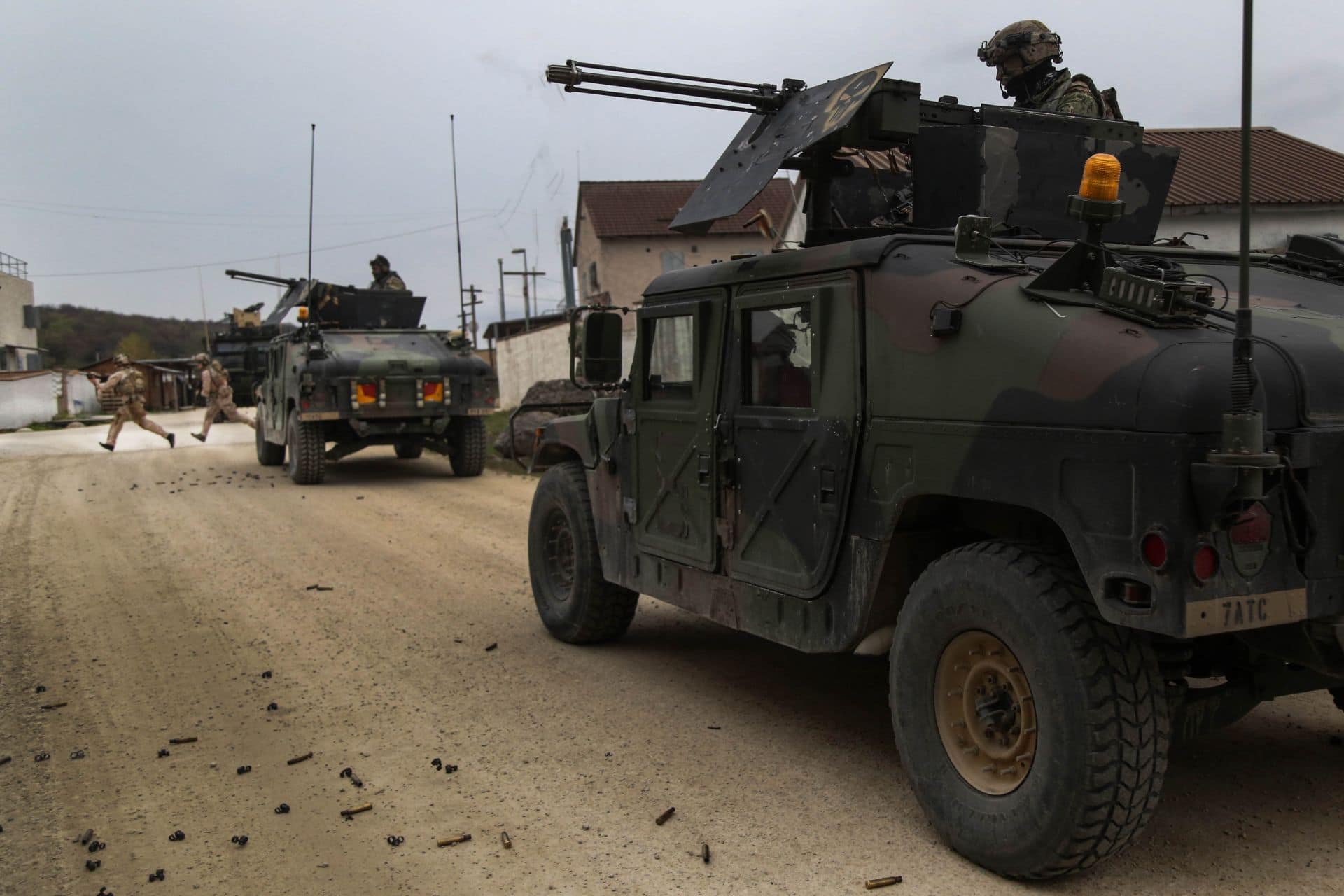HOHENFELS, Germany:Naval Special Warfare operators from U.S. Special Operations Command along with NATO Special Operations Forces from Albania, Bulgaria and Lithuania, partnered with the U.S. Army’s 2nd Cavalry Regiment during Saber Junction 17 at the Joint Multinational Readiness Center in Hohenfels, Germany, April 25 to May 19, 2017.
Saber Junction 17 is the regiment’s brigade-level validation exercise designed to prepare the unit for combat operations in the complex European theater of operations. It features about 4,500 participants from 12 allied and Partnership for Peace nations, including Georgia, Italy, Macedonia, Poland, Romania, Slovenia, Ukraine and the United Kingdom.
REALIST TRAINING ENVIRONMENT
The special operations forces cell at the readiness center brought in a multinational special operations task group to train with the 2nd Cavalry Regiment soldiers, said Army Maj. Robert Temple, officer in charge of the cell. The goal, he added, is to create a training environment that provides realistic operational scenarios, as well as opportunities to build relationships with special operations forces elements.
he special operations forces cell at the readiness center brought in a multinational special operations task group to train with the 2nd Cavalry Regiment soldiers, said Army Maj. Robert Temple, officer in charge of the cell. The goal, he added, is to create a training environment that provides realistic operational scenarios, as well as opportunities to build relationships with special operations forces elements.
One of these elements was a U.S.-based special operations team composed of Navy SEALs. The team has worked closely with the 2nd Cavalry Regiment during the exercise, including embedding a liaison officer with the unit.
“We learned what [special operations forces] can contribute, and they certainly learned what our challenges are,” said Army Col. Patrick Ellis, the 2nd Cavalry Regiment’s commander. “They put a liaison chief petty officer in the tactical operations center, and he greatly contributed to the understanding of what they can do.”
In a simulated European village forward of the regiment’s position, the U.S. special operations forces team surveilled the enemy from a rooftop.
The special operations platoon commander discussed how the covert nature of his team’s operation aided in intelligence collection capabilities.
“Our ability to conduct close-area reconnaissance and low-visibility operations has provided 2CR a great resource to fill their intelligence gaps,” the commander said.
The special operations team also contributed to the regiment’s ability to coordinate fires, said Army Lt. Col. Thurman McKenzie, 2nd Cavalry Regiment’s Field Artillery Squadron commander and regimental fire support coordinator.
POWERFUL HOWITZERS
“In a high-intensity, conventional conflict, SOF are able to identify and trigger the engagement of targets, often deep behind enemy lines,” said McKenzie, whose 155mm M777 Howitzers have the ability to deliver precision and conventional munitions.
The coordination and integration of these surface-to-surface fires was a unique training opportunity for the special operations team.
“There are nuances that come inherent with artillery as opposed to close air support,” said the SOF commander. “The training provides better situational awareness for ground force commanders and the fires community alike.”
Having spent time in the special operations community, including a rotation with an element at the National Training Center at Fort Irwin, California, Ellis said, he saw the value of the integration efforts.
“The [special operations forces] team did a great job down here,” Ellis said. “They were heavily integrated and leaned forward.”
TRAINING WITH PARTNERS
In addition to the integration of U.S. special operations forces, a simulated resistance force was introduced into the exercise through the use of the Lithuanian National Volunteer Defense Force.
Temple said this is the first time he’s seen the capabilities of a unit trained to fight as a resistance force. “We are meeting the [Lithuanians’] training objectives by exercising their small-unit tactics in nonpermissive environments,” he added. “We are also meeting our own objectives by training with [them] and learning how to work with a resistance force.”
Living in a simulated village, behind enemy lines, the Lithuanians operated in civilian clothes while living side by side with civilian role players.
“When we arrived here at JMRC, we quickly assimilated within the simulated training environment,” a Lithuanian sharpshooter said. “By day two, we had integrated fully into the village and began training closely with the Bulgarian [special operations forces] team.”
The sharpshooter discussed some of the training objectives his unit has worked toward during the exercise.
“The most important things we’ve learned from this exercise were tactical and technical insights from each nation’s [special operations] forces,” the sharpshooter said. “We’ve also learned how to effectively react in high-stress, tactical environments.”
Facilitating interdependence, interoperability and integration among special operations forces is something the cell at the readiness center ensures is embedded deeply in every rotation that comes through the facility.
Temple said the special operations forces cell works to meet readiness center and Special Operations Command Europe’s objectives for integration of special operations and conventional forces in a high-intensity conflict environment.
Temple discussed how the cell supports special operations training groups and task units to develop their capabilities in the full spectrum of special operations alongside a live brigade and division headquarters in a realistic joint task force training environment.
“We often assume everyone is going to work perfectly together should open conflict arise,” he said. “But finding those interoperability challenges will only happen if we bring the actual aligned units together and let them work their issues out independently.”
The special operations training group supervising special operations forces operations during the exercise is commanded by the Bulgarian 1st Battalion, 68th Special Forces Brigade. The Bulgarian special operations training group at Saber Guardian 17 is the supporting group for the NATO Response Force for 2017.










